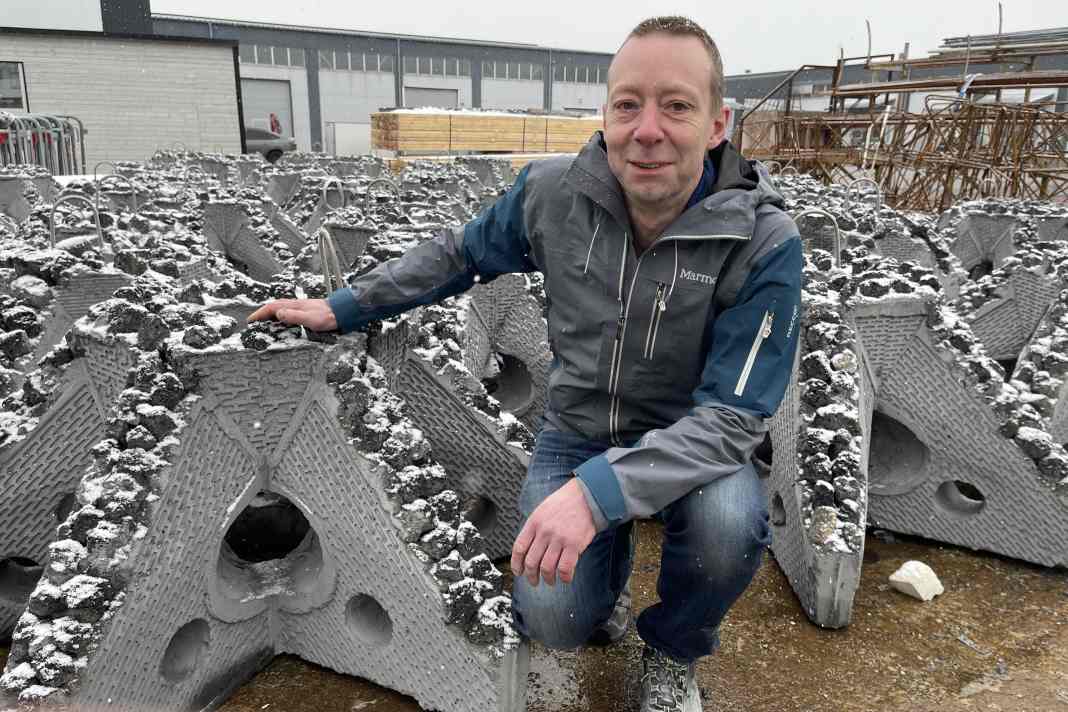



The project to restore the reefs for the endangered cold-water coral, known locally as the oegon coral (Desmophyllum pertusum) was initiated in 2019 by the County Administrative Board of Västra Götaland and the University of Gothenburg.
"In order for this particular coral and other organisms to thrive and colonise the area, the concrete must have a low pH value. For this project, we tested five different compositions to find out which recipe works best," says Ingemar Löfgren, Head of Research and Development at Thomas Concrete Group.
The use of concrete in the marine environment is not new
Archaeologists have found piers from Roman times that existed 2,000 years ago. At that time, volcanic ash and slaked lime were used as a binding agent for the building material. As part of this project, a low-carbon concrete with a low cement content and the addition of blast furnace slag and quartz dust was developed to ensure the durability of the reef in a marine environment. This special formulation has lowered the pH to 11.5, making the artificial coral reefs a place where coral larvae can thrive and settle, leading to new natural reefs.
The plan is to build a total of 132 concrete reefs at selected locations in the national park. The 600-kilogram concrete blocks are shaped like six-armed octopuses and have hollow blocks on the surface. Artificial coral reefs are set up where the water flows faster and where coral larvae can colonise as well as possible.
Destruction by bottom trawling
There used to be coral reefs in six places in Kosterhavet National Park. However, due to bottom trawling and other human activities, only two reefs remain. Giving the coral reefs a chance to grow back is also crucial for the survival of other species. Over 1,300 different species have been observed on these reefs, including commercially important fish species such as cod.
The project is co-financed by the EU's Life Programme and the Swedish Agency for Marine and Water Management. It will run until 2025. In addition to the researchers from the University of Gothenburg, the county administration of Västra Götaland is also involved in the project.
